The Construction of Equivalent Particle Element Models for Conditioned Sandy Pebble
Abstract
:1. Introduction
2. Properties of Conditioned Sandy Pebble
2.1. Conditioner Constituents
2.2. Grain Size Distribution
2.3. Fluidity
2.4. Shear Strength
3. Geometric Model of the Particle Element
3.1. Particle Shape
3.2. Particle Size Distribution
3.3. Particle Arrangement
4. Physical Model between Particles
4.1. Contact Components
4.2. Contact Constitutive Relation
5. Calibration of Model Parameters
5.1. Undetermined Parameters
5.2. Method
5.3. Calibration Process
5.3.1. Range of Parameters
5.3.2. Parameter Sets with Satisfactory Fluidity
5.3.3. Strength Required Parameter Set
6. Conclusions
- (1)
- Because of the angularity of the nonspherical grains, there exists strong interlocking between clusters. So in the cluster model, relatively smaller rolling friction coefficient and surface energy are required.
- (2)
- Since the model parameters are properly calibrated, the two established particle models both can well describe the strength property and fluidity of the actual soil. However, the cluster model takes ~4 times longer than the sphere model to execute the simulation.
Author Contributions
Funding
Conflicts of Interest
References
- Zhang, P.; Jin, L.; Du, X.; Lu, D. Computational homogenization for mechanical properties of sand cobble stratum based on fractal theory. Eng. Geol. 2018, 232, 82–93. [Google Scholar] [CrossRef]
- Yagiz, S. Brief notes on the influence of shape and percentage of gravel on the shear strength of sand and gravel mixtures. Bull. Eng. Geol. Environ. 2001, 60, 321–333. [Google Scholar] [CrossRef]
- Maynar, M.J.M.; Rodríguez, L.E.M. Discrete numerical model for analysis of earth pressure balance tunnel excavation. J. Geotech. Geoenviron. Eng. 2005, 131, 1234–1242. [Google Scholar] [CrossRef]
- Rabczuk, T.; Belytschko, T. A three dimensional large deformation meshfree method for arbitrary evolving cracks. Comput. Methods Appl. Mech. Eng. 2007, 196, 2777–2799. [Google Scholar] [CrossRef]
- Rabczuk, T.; Belytschko, T. Cracking particles: a simplified meshfree method for arbitrary evolving cracks. Int. J. Numer. Methods Eng. 2004, 61, 2316–2343. [Google Scholar] [CrossRef]
- Rabczuk, T.; Gracie, R.; Song, J.H.; Belytschko, T. Immersed particle method for fluid-structure interaction. Int. J. Numer. Methods Eng. 2010, 81, 48–71. [Google Scholar] [CrossRef]
- Amiri, F.; Anitescu, C.; Arroyo, M.; Bordas, S.; Rabczuk, T. XLME interpolants, a seamless bridge between XFEM and enriched meshless methods. Comput. Mech. 2014, 53, 45–57. [Google Scholar] [CrossRef]
- Rabczuk, T.; Bordas, S.; Zi, G. On three-dimensional modelling of crack growth using partition of unity methods. Comput. Struct. 2010, 88, 1391–1411. [Google Scholar] [CrossRef]
- Rabczuk, T.; Zi, G.; Bordas, S.; Nguyen-Xuan, H. A simple and robust three-dimensional cracking-particle method without enrichment. Comput. Methods Appl. Mech. Eng. 2010, 199, 2437–2455. [Google Scholar] [CrossRef]
- Areias, P.; Cesar de Sa, J.; Rabczuk, T.; Camanho, P.P.; Reinoso, J. Effective 2D and 3D crack propagation with local mesh refinement and the screened Poisson equation. Eng. Fract. Mech. 2018, 189, 339–360. [Google Scholar] [CrossRef]
- Areias, P.; Rabczuk, T. Steiner-point free edge cutting of tetrahedral meshes with applications in fracture. Finite Elem. Anal. Des. 2017, 132, 27–41. [Google Scholar] [CrossRef]
- Areias, P.; Rabczuk, T.; Msekh, M. Phase-field analysis of finite-strain plates and shells including element subdivision. Comput. Methods Appl. Mech. Eng. 2016, 312, 322–350. [Google Scholar] [CrossRef]
- Areias, P.; Msekh, M.A.; Rabczuk, T. Damage and fracture algorithm using the screened Poisson equation and local remeshing. Eng. Fract. Mech. 2016, 158, 116–143. [Google Scholar] [CrossRef]
- Areias, P.; Rabczuk, T.; Dias-da-Costa, D. Element-wise fracture algorithm based on rotation of edges. Eng. Fract. Mech. 2013, 110, 113–137. [Google Scholar] [CrossRef] [Green Version]
- Ren, H.; Zhuang, X.; Rabczuk, T. Dual-horizon peridynamics: A stable solution to varying horizons. Comput. Methods Appl. Mech. Eng. 2017, 318, 762–782. [Google Scholar] [CrossRef] [Green Version]
- Ren, H.; Zhuang, X.; Cai, Y.; Rabczuk, T. Dual-Horizon Peridynamics. Int. J. Numer. Methods Eng. 2016, 108, 1451–1476. [Google Scholar] [CrossRef]
- Talebi, H.; Silani, M.; Rabczuk, T. Concurrent Multiscale Modelling of Three Dimensional Crack and Dislocation Propagation. Adv. Eng. Softw. 2015, 80, 82–92. [Google Scholar] [CrossRef]
- Talebi, H.; Silani, M.; Bordas, S.; Kerfriden, P.; Rabczuk, T. A Computational Library for Multiscale Modelling of Material Failure. Comput. Mech. 2014, 53, 1047–1071. [Google Scholar] [CrossRef]
- Budarapu, P.; Gracie, R.; Bordas, S.; Rabczuk, T. An adaptive multiscale method for quasi-static crack growth. Comput. Mech. 2014, 53, 1129–1148. [Google Scholar] [CrossRef]
- Budarapu, P.; Gracie, R.; Shih-Wei, Y.; Zhuang, X.; Rabczuk, T. Efficient Coarse Graining in Multiscale Modeling of Fracture. Theor. Appl. Fract. Mech. 2014, 69, 126–143. [Google Scholar] [CrossRef]
- Mindlin, R.D. Compliance of elastic bodies in contact. J. Appl. Mech. 1949, 16, 259–268. [Google Scholar]
- Tavares, L.M.; King, R.P. Single-particle fracture under impact loading. Int. J. Miner. Process. 1998, 54, 1–28. [Google Scholar] [CrossRef]
- Mishra, B.K.; Murty, C. On the determination of contact parameters for realistic DEM simulations of ball mills. Powder Technol. 2001, 115, 290–297. [Google Scholar] [CrossRef]
- Jayasundara, C.T.; Yang, R.Y.; Yu, A.B.; Rubenstein, J. Effects of disc rotation speed and media loading on particle flow and grinding performance in a horizontal stirred mill. Int. J. Miner. Process. 2010, 96, 27–35. [Google Scholar] [CrossRef]
- Rosenkranz, S.; Breitung-Faes, S.; Kwade, A. Experimental investigations and modelling of the ball motion in planetary ball mills. Powder Technol. 2011, 212, 224–230. [Google Scholar] [CrossRef]
- Piechatzek, T.; Kwade, A. DEM based characterization of stirred media mills. In Proceedings of the European Symposium on Comminution, Espoo, Finland, 15–18 September 2009. [Google Scholar]
- Quist, J.C.E. Device for calibrating of DEM contact model parameters. In Proceedings of the EDEM Conference, Edinburgh, UK, 5–7 April 2011. [Google Scholar]
- Li, C.Q.; Liu, T.W.; Zhang, H.Y. Back-analysis on micromechanical parameters of soil mass using BP neural network. J. Eng. Geol. 2015, 23, 609–615. (In Chinese) [Google Scholar]
- Hertz, H. On the contact of elastic solids. J. Fur Die Reine Und Angew. Math. 1882, 92, 156–171. [Google Scholar]
- Mindlin, R.D.; Deresiewicz, H. Elastic spheres in contact under varying oblique forces. ASME J. Appl. Mech. 1953, 20, 327–344. [Google Scholar]
- Tsuji, Y.; Tanaka, T.; Ishida, T. Lagrangian numerical simulation of plug flow of cohesionless particles in a horizontal pipe. Powder Technol. 1992, 71, 239–250. [Google Scholar] [CrossRef]
- Cundall, P.A.; Strack, O.D.L. A discrete numerical method for granular assemblies. Geotechnique 1979, 29, 47–65. [Google Scholar] [CrossRef]
- Sakaguchi, E.; Ozaki, E.; Igarashi, T. Plugging of the flow of granular materials during the discharge from a silo. Int. J. Mod. Phys. B 1993, 7, 1949–1963. [Google Scholar] [CrossRef]
- Johnson, K.L.; Kendal, K.; Roberts, A.D. Surface energy and the contact of elastic solids. Proc. R. Soc. A 1971, 324, 301–313. [Google Scholar] [CrossRef]
- Hu, M.; Xu, G.Y.; Hu, S.B. Study of equivalent elastic modulus of sand gravel soil with Eshelby tensor and Mori-Tanaka equivalent method. Rock Soil Mech. 2013, 34, 1437–1442. (In Chinese) [Google Scholar]
- Vu-Bac, N.; Lahmer, T.; Zhuang, X.; Nguyen-Thoi, T.; Rabczuk, T. A software framework for probabilistic sensitivity analysis for computationally expensive models. Adv. Eng. Softw. 2016, 100, 19–31. [Google Scholar] [CrossRef]
- Hamdia, K.; Zhuang, X.; Silani, M.; He, P.; Rabczuk, T. Stochastic analysis of the fracture toughness of polymeric nanoparticle composites using polynomial chaos expansions. Int. J. Fract. 2017, 206, 215–227. [Google Scholar] [CrossRef]
- Hamdia, K.; Zhuang, X.; Alajlan, N.; Rabczuk, T. Sensitivity and uncertainty analyses for exoelectric nanostructures. Comput. Methods Appl. Mech. Eng. 2018, 337, 95–109. [Google Scholar] [CrossRef]

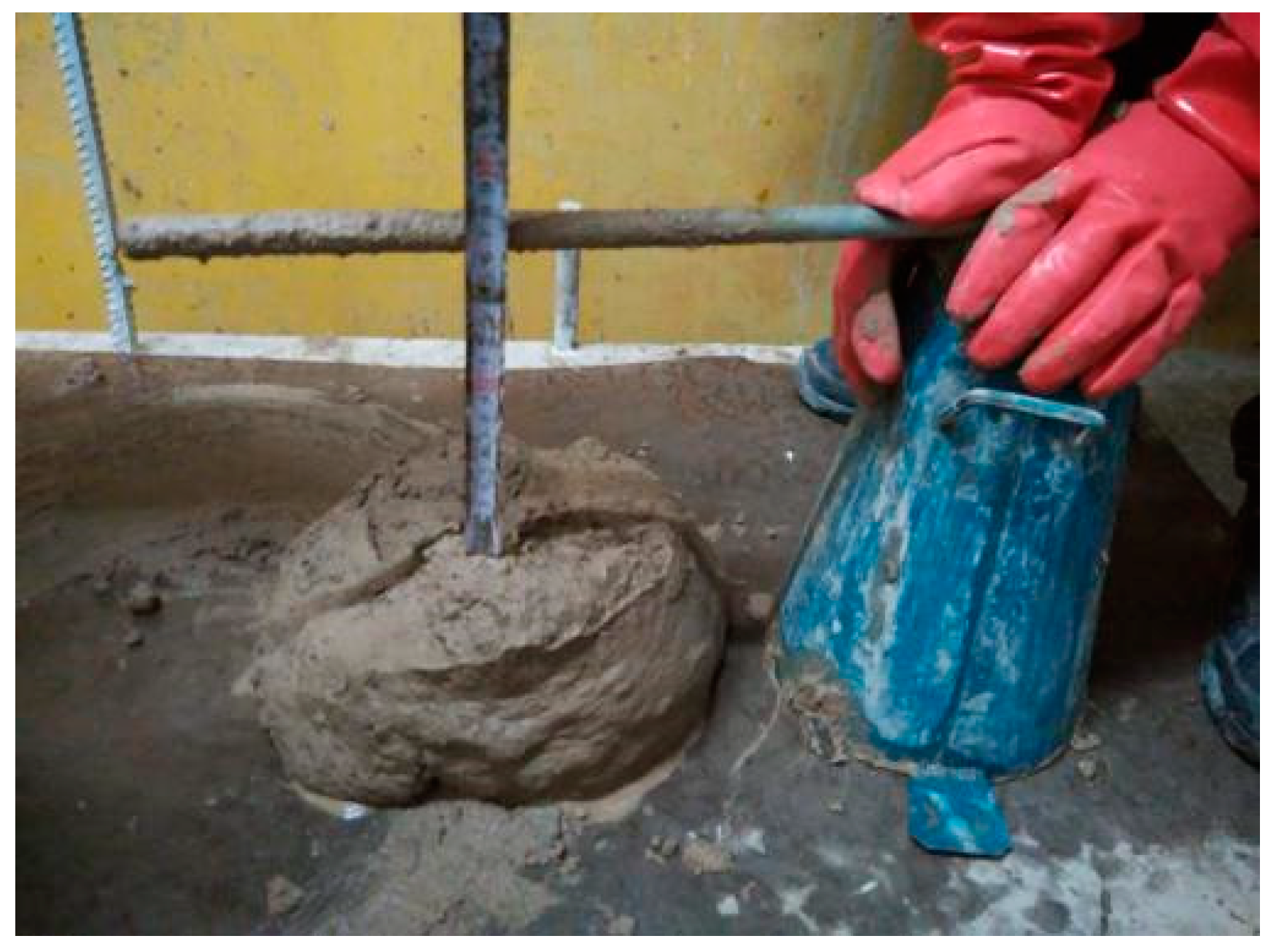
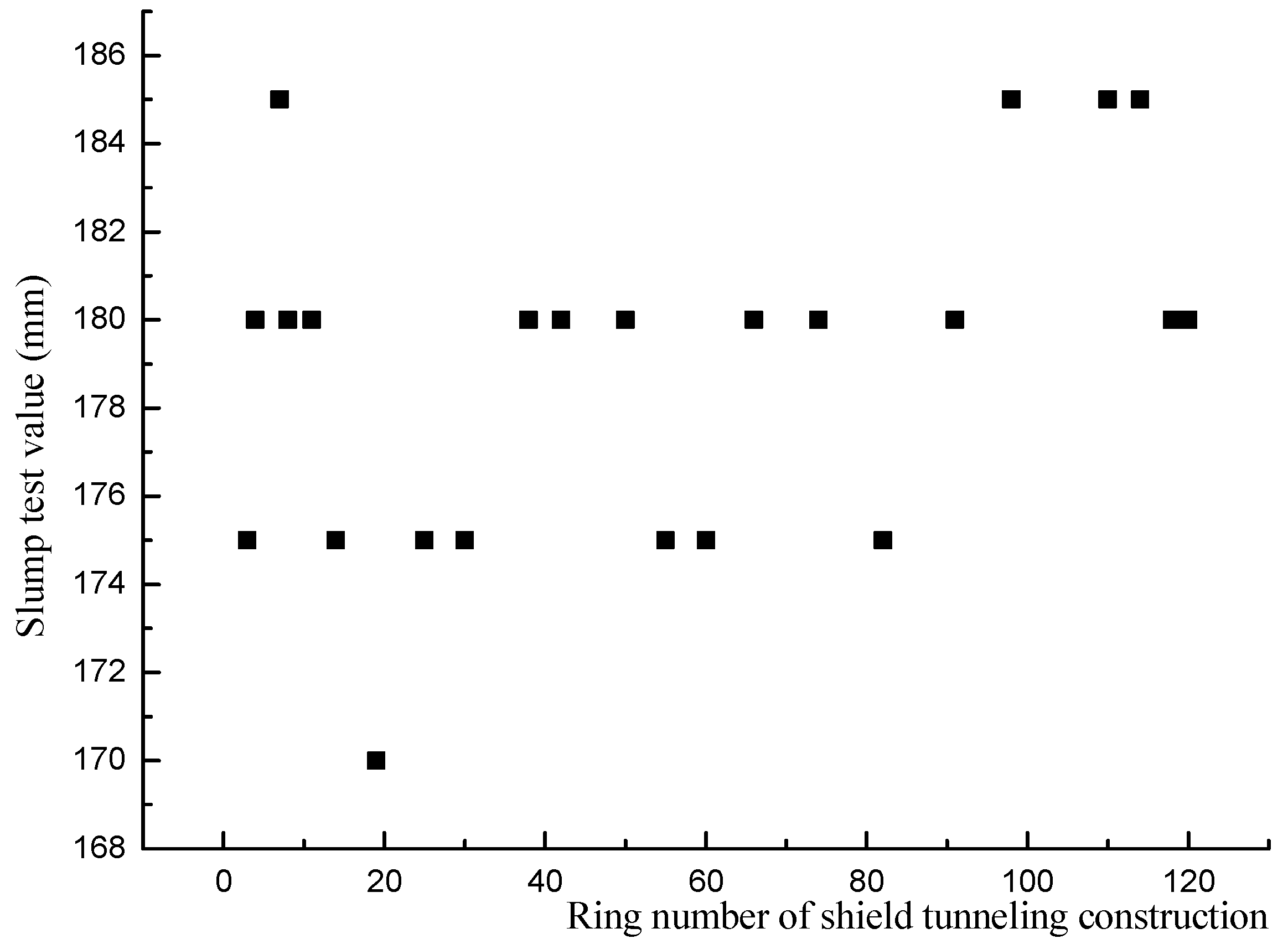
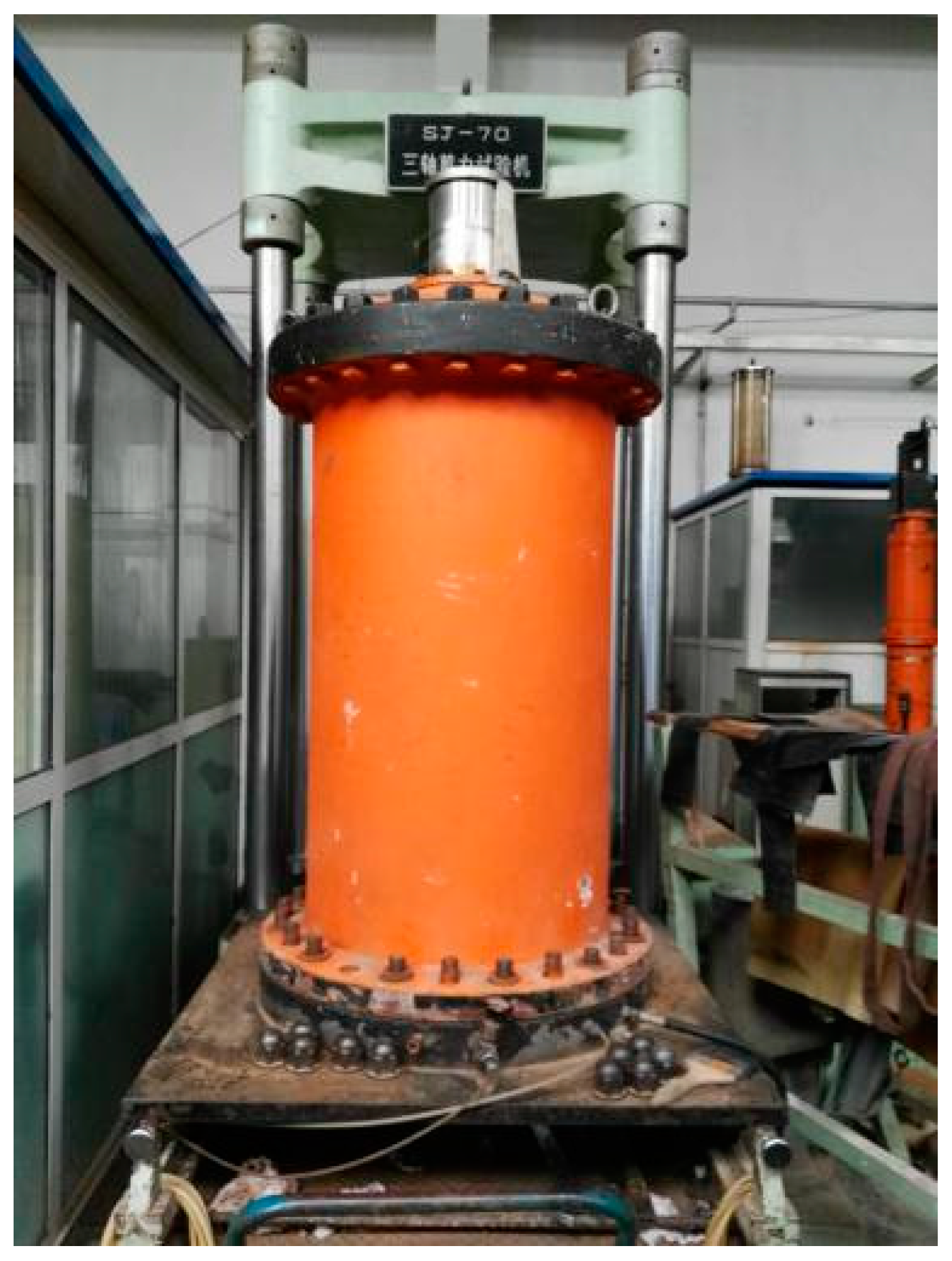

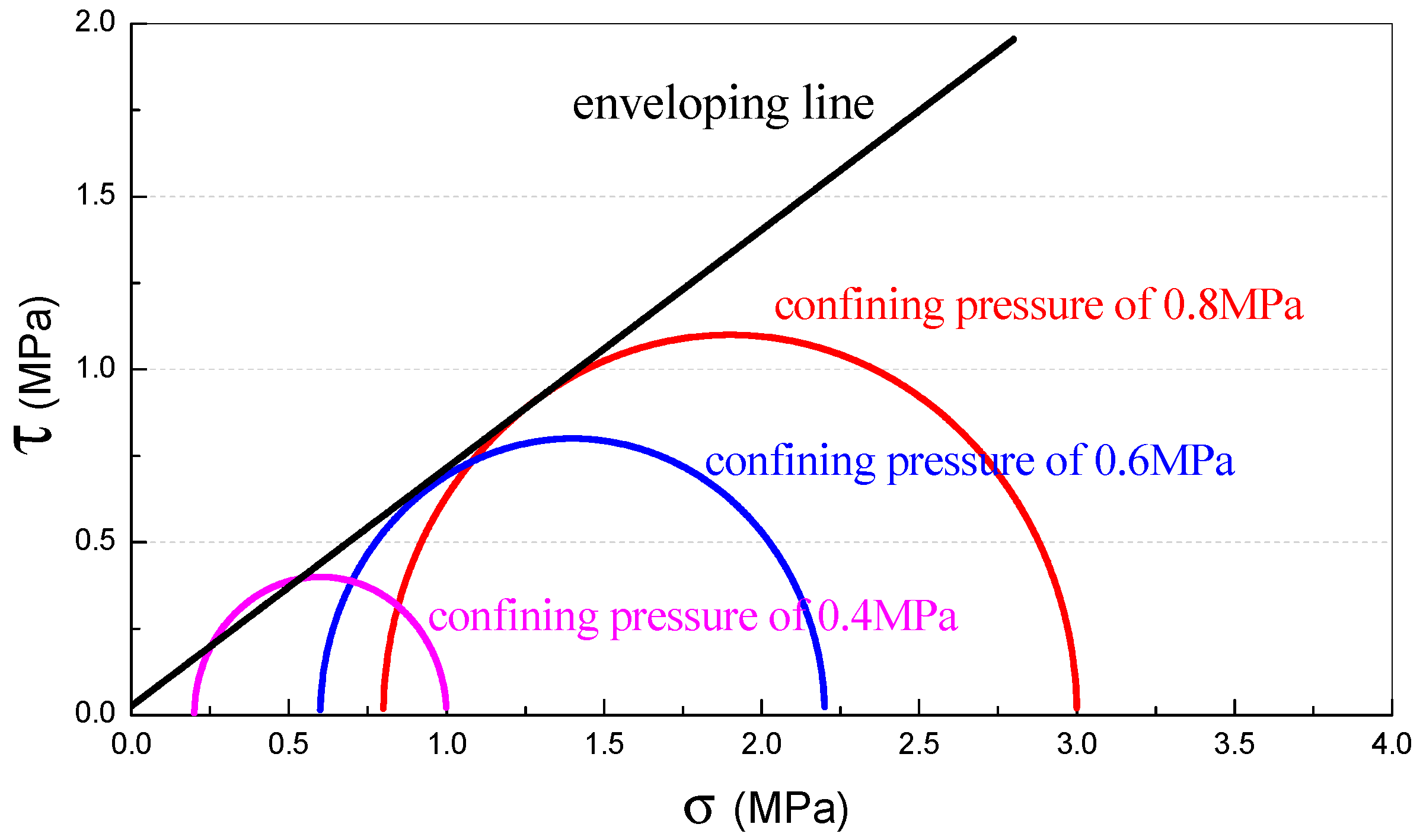


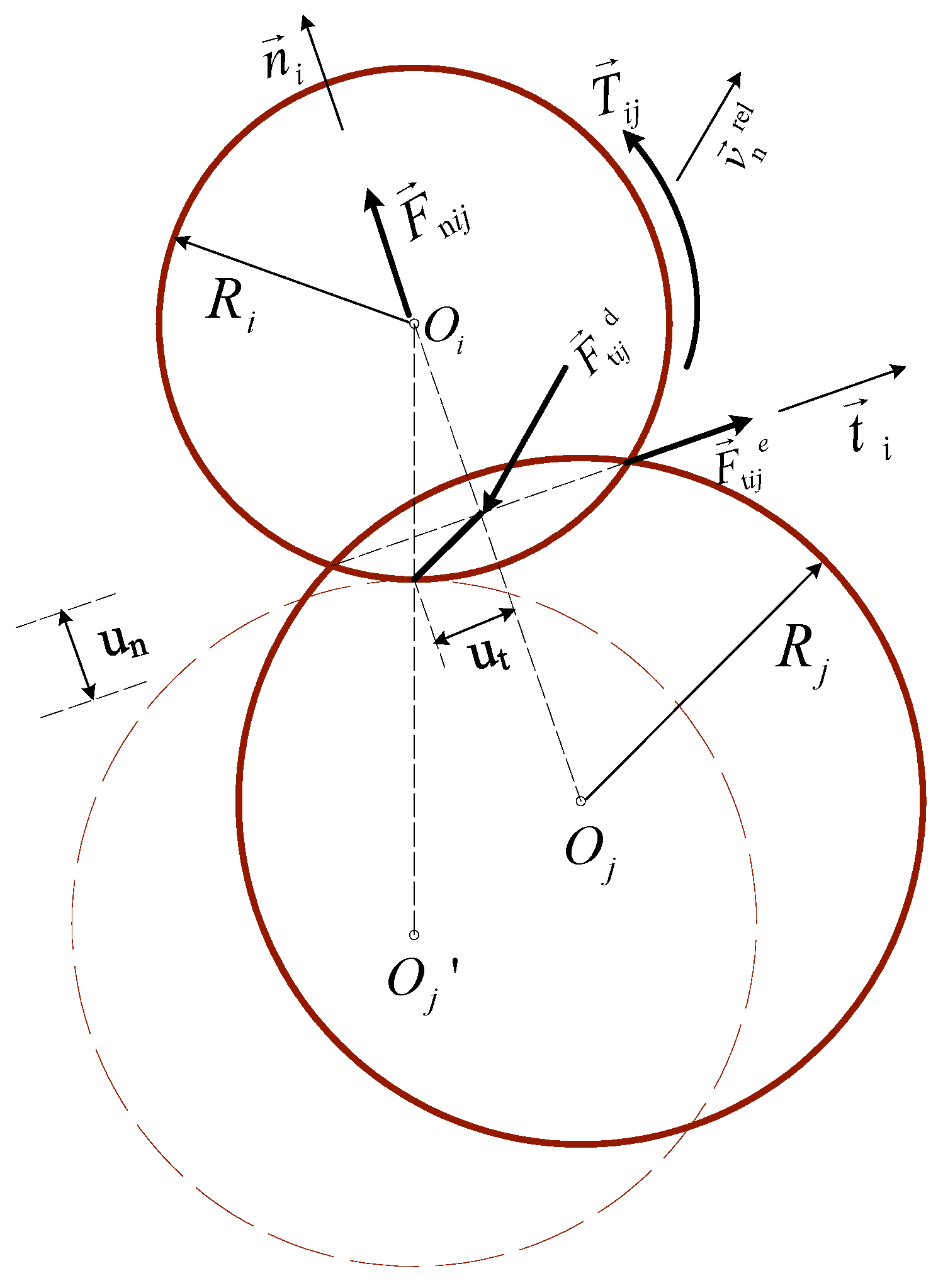
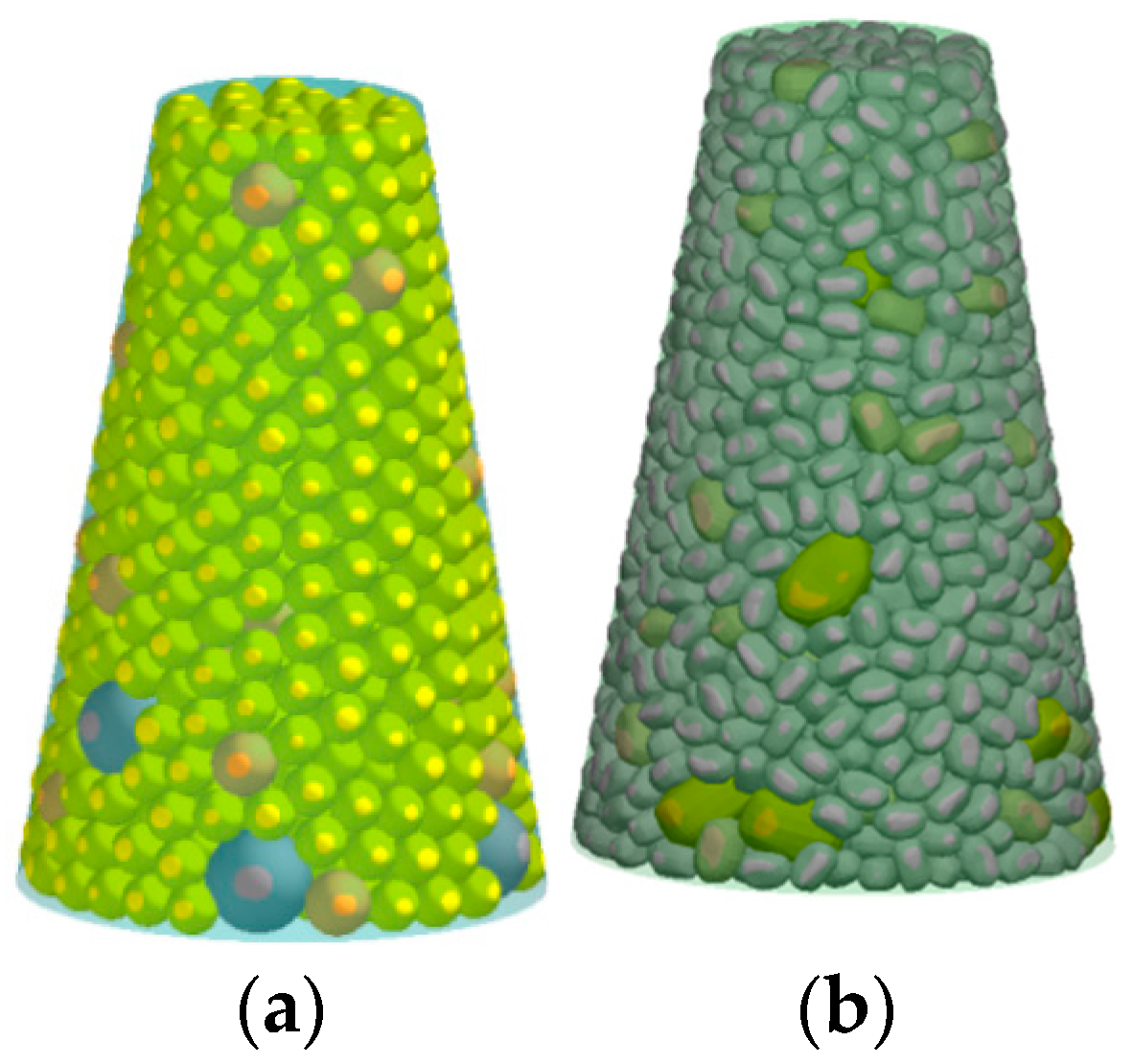
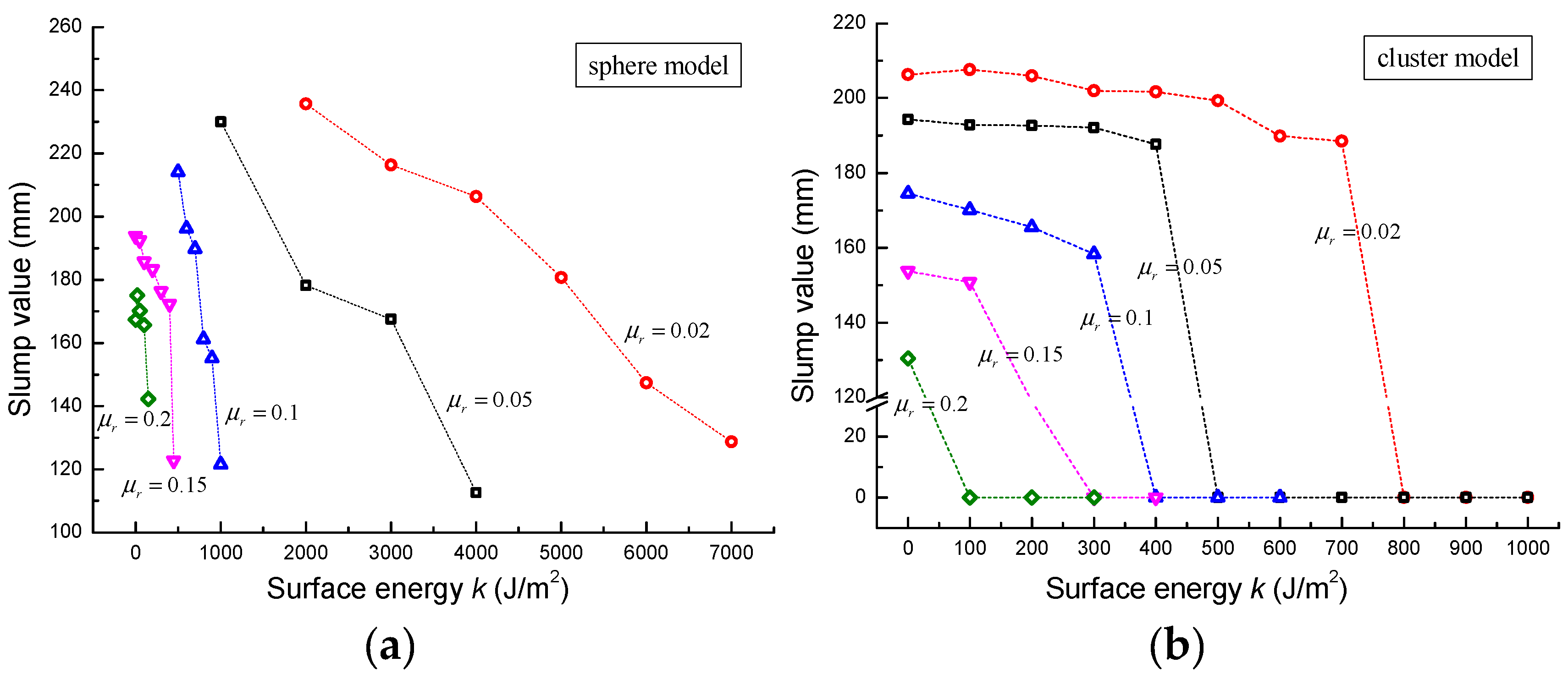
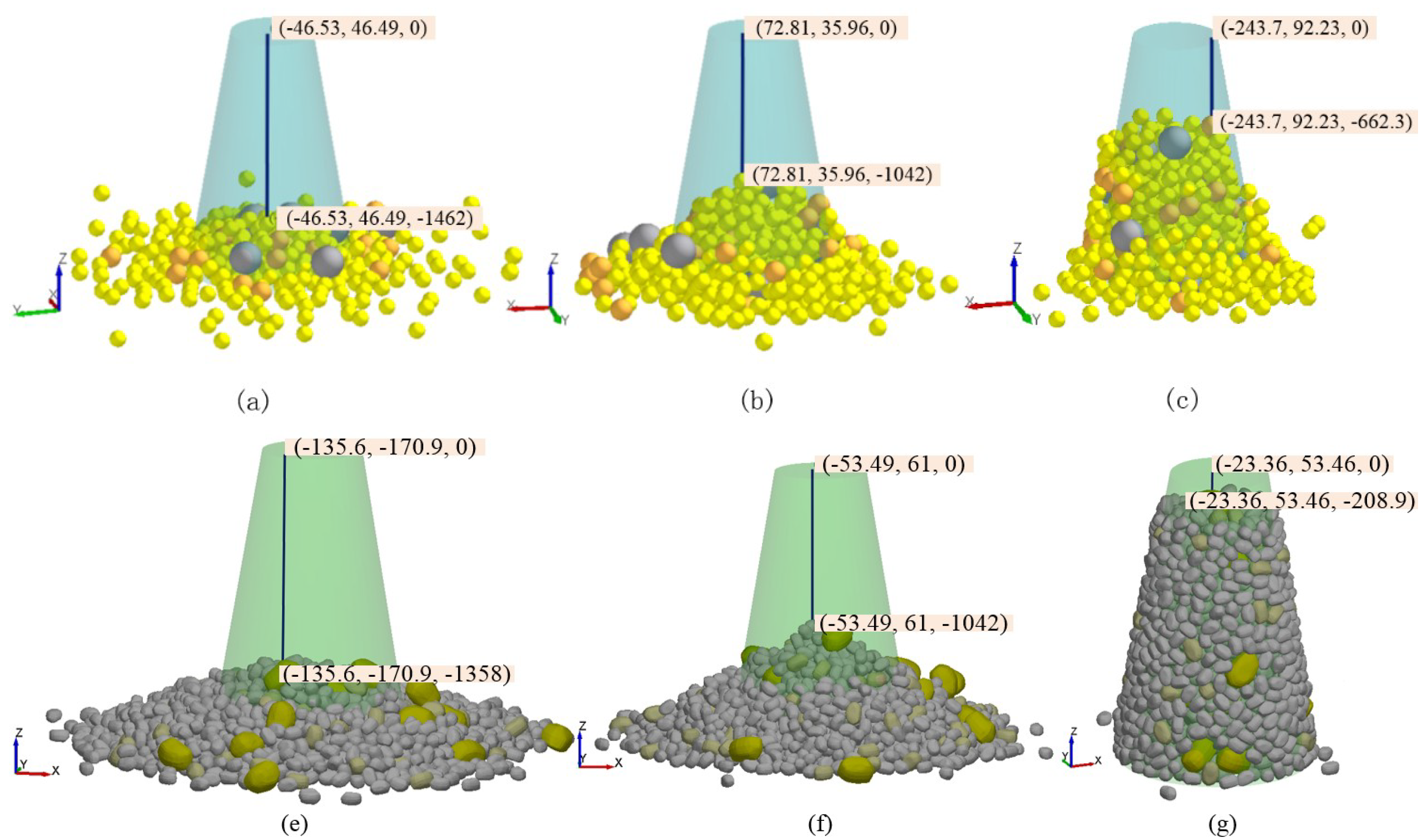
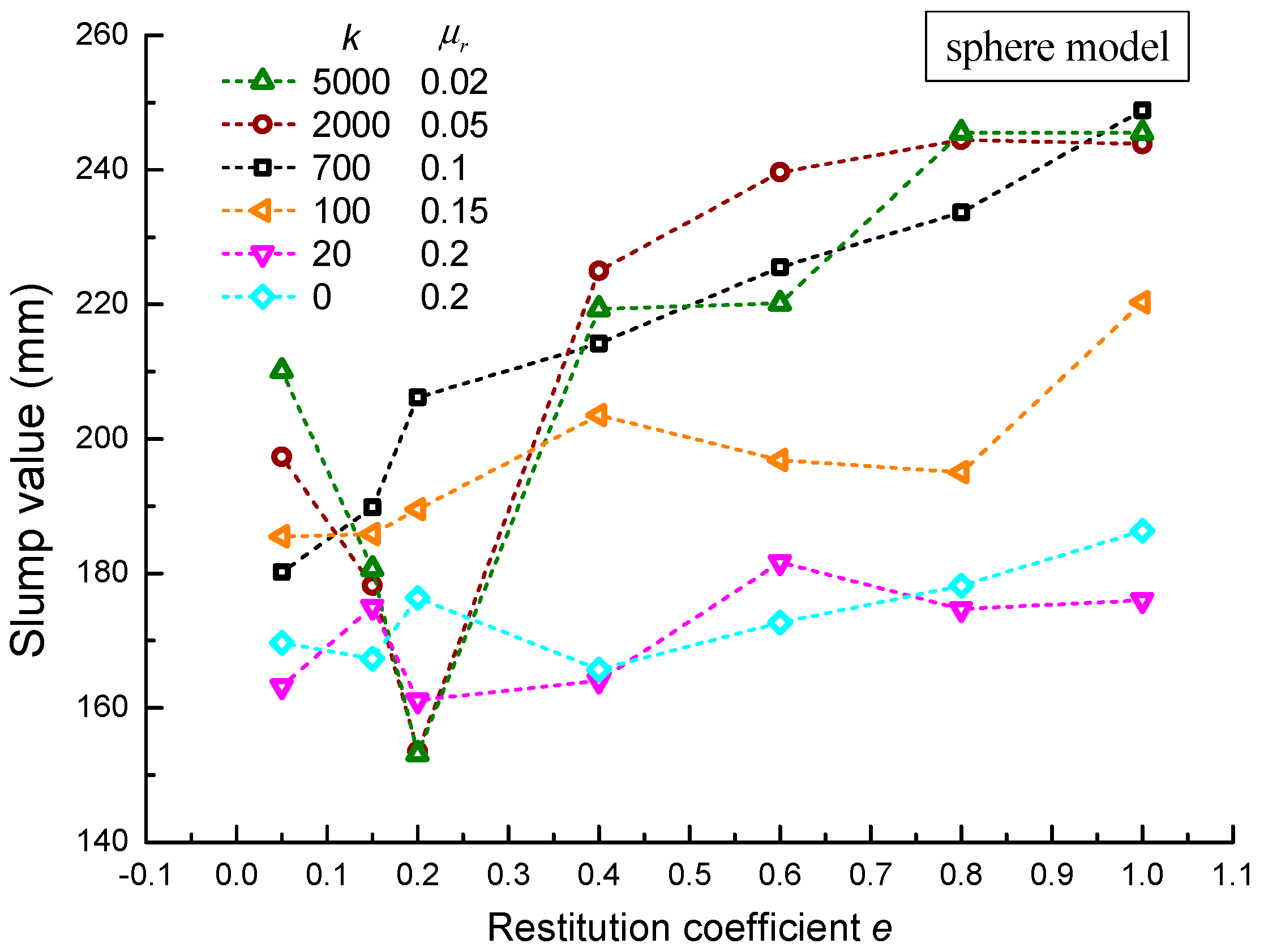
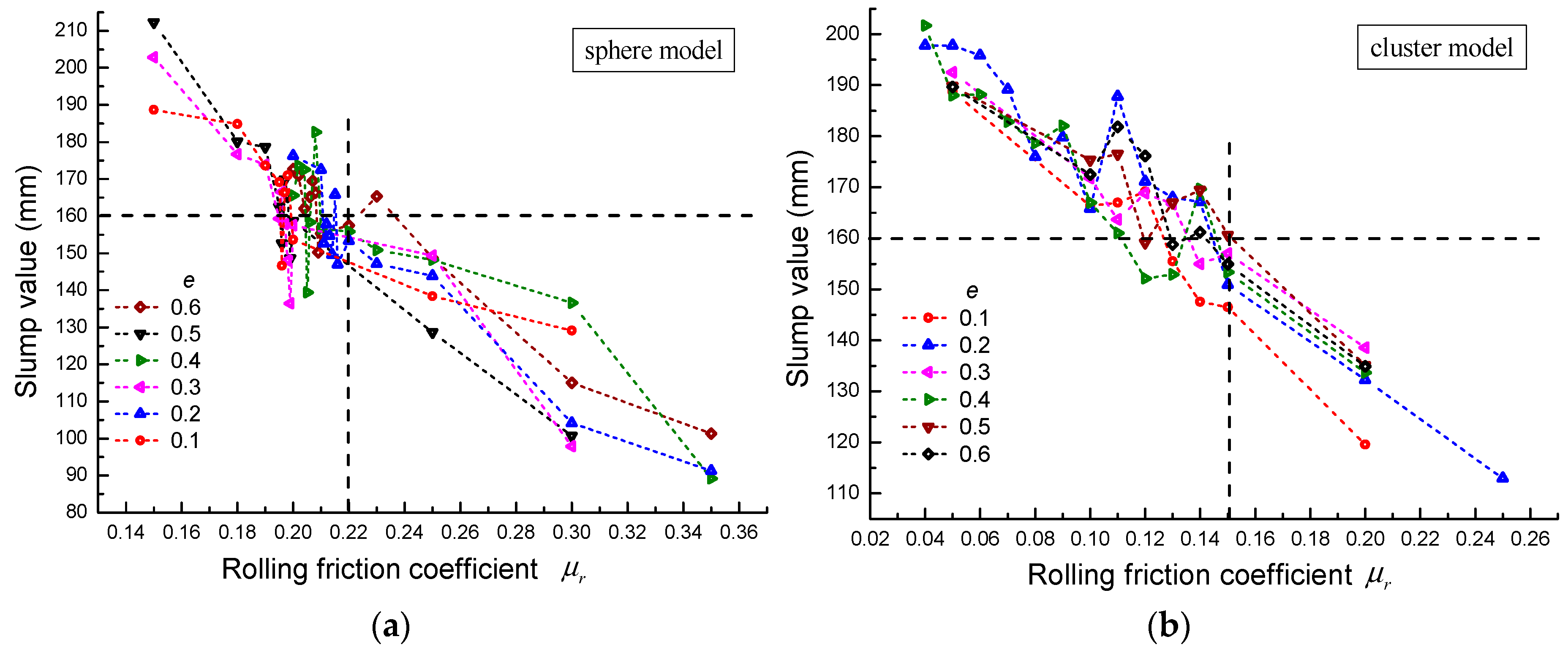
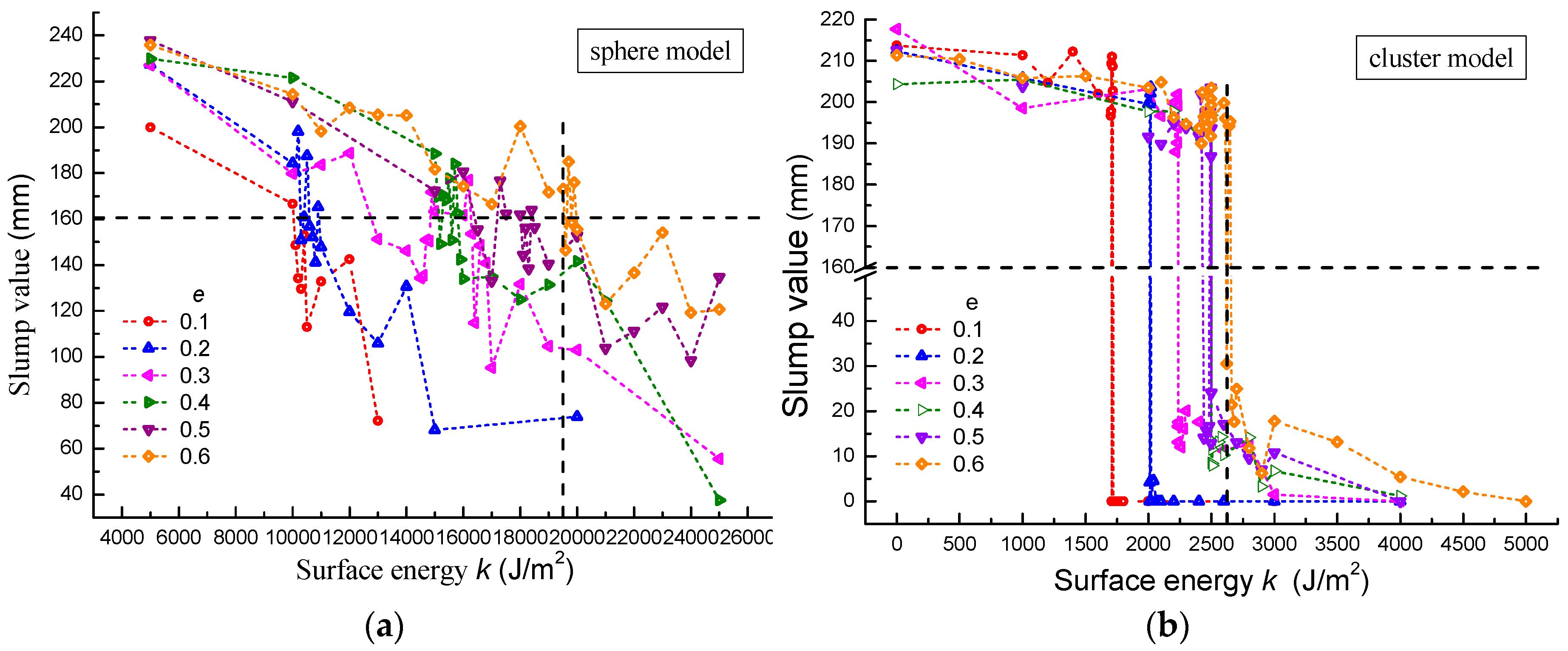
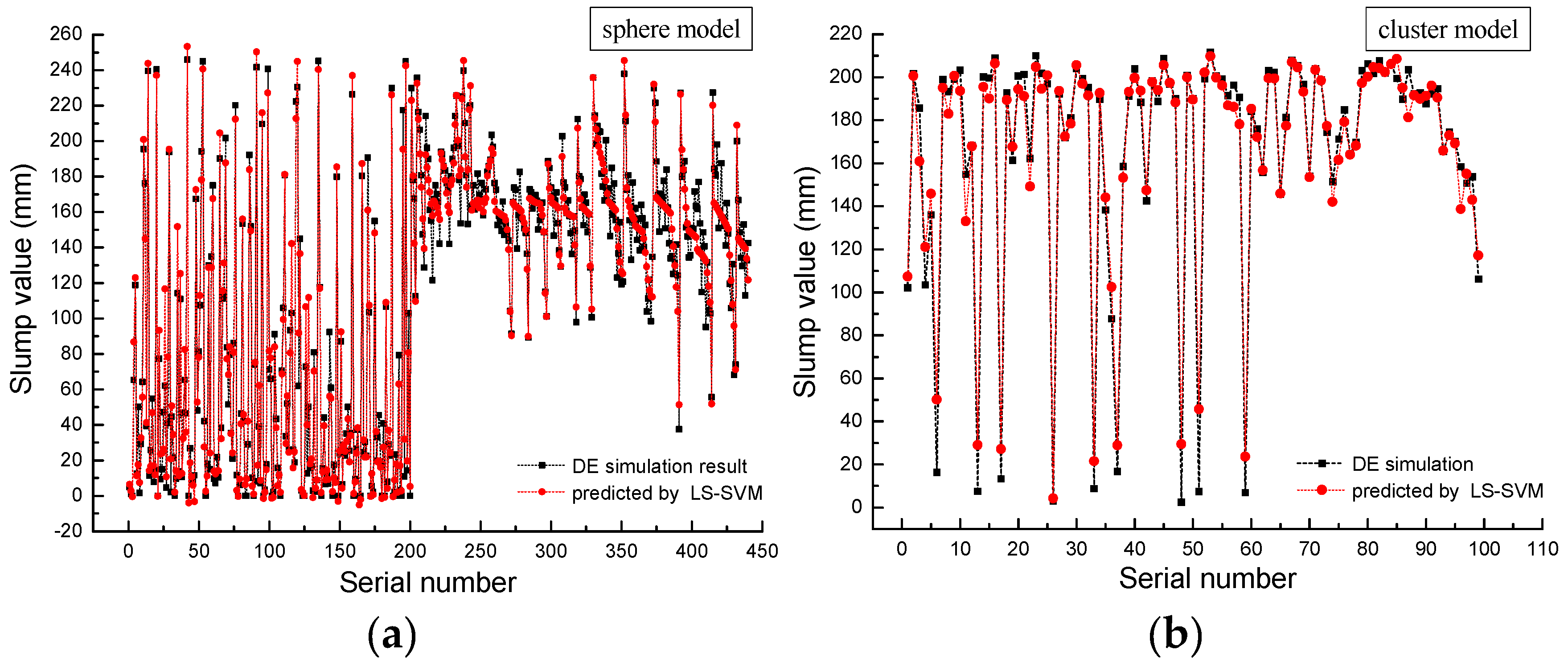

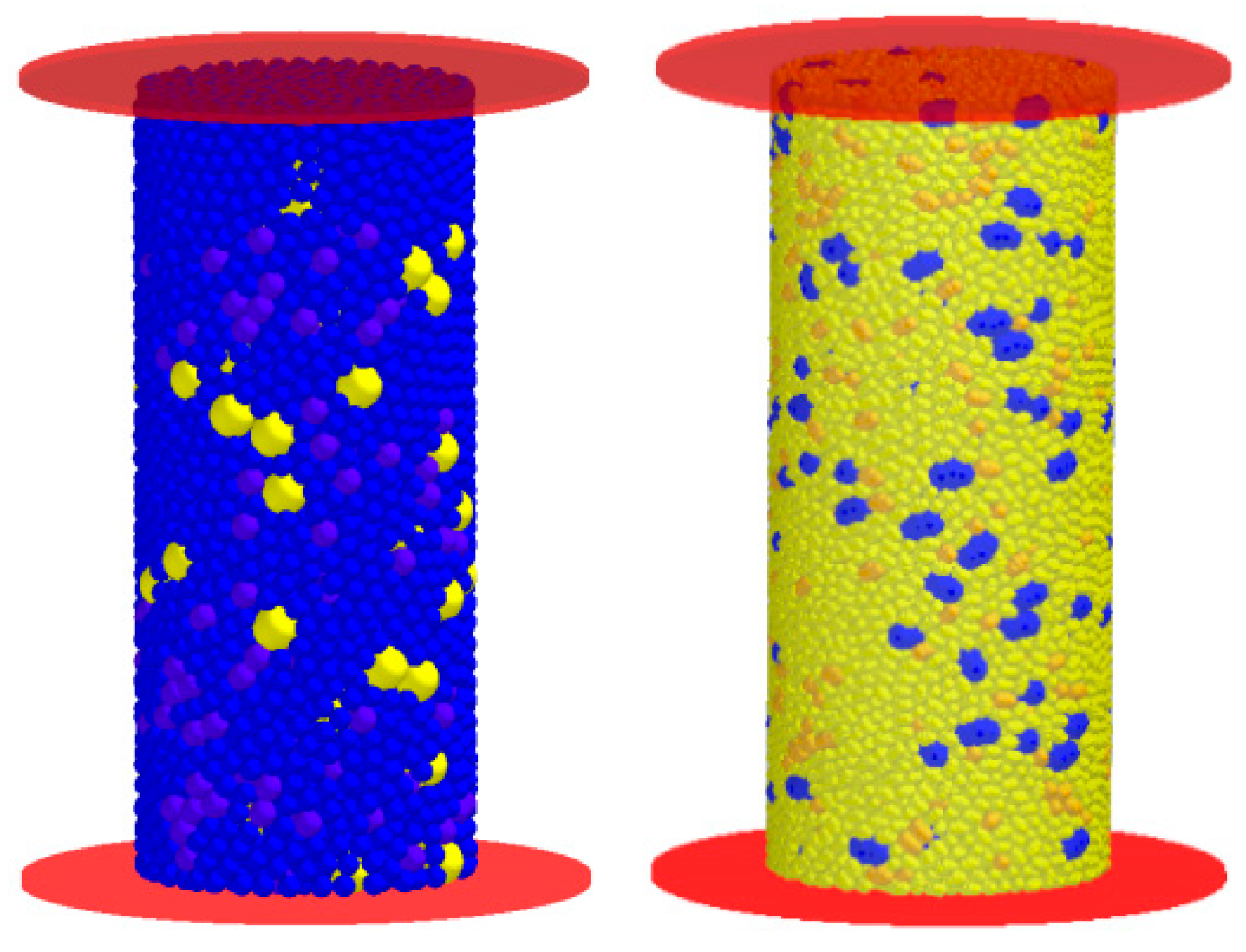
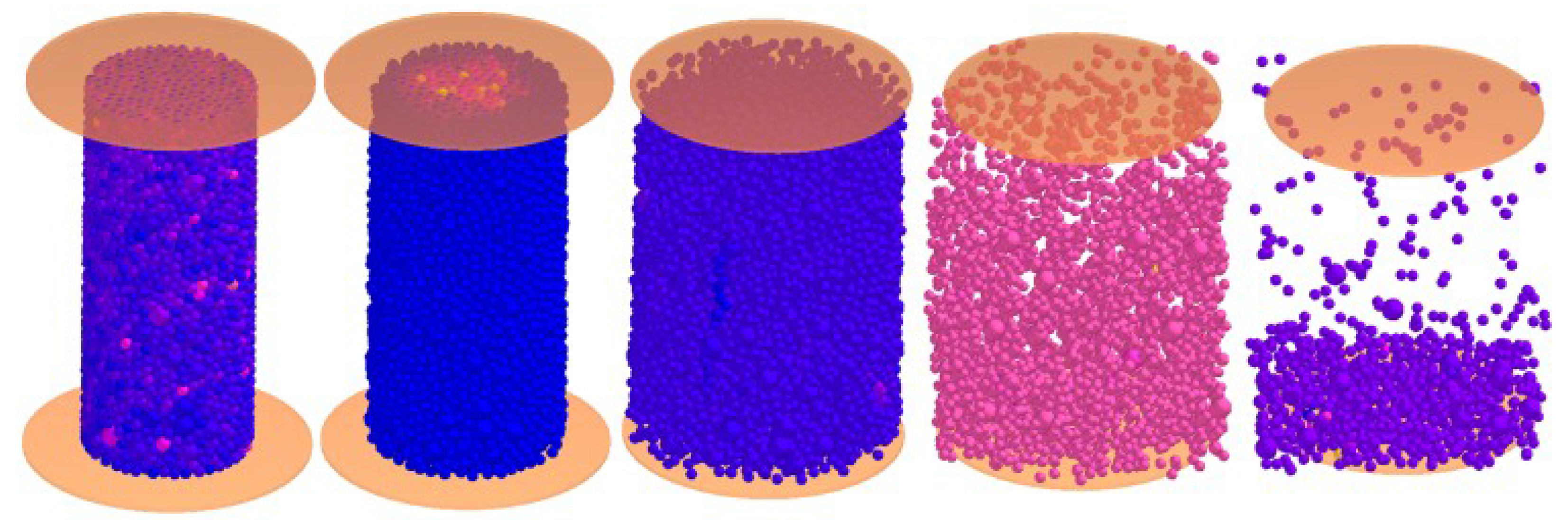
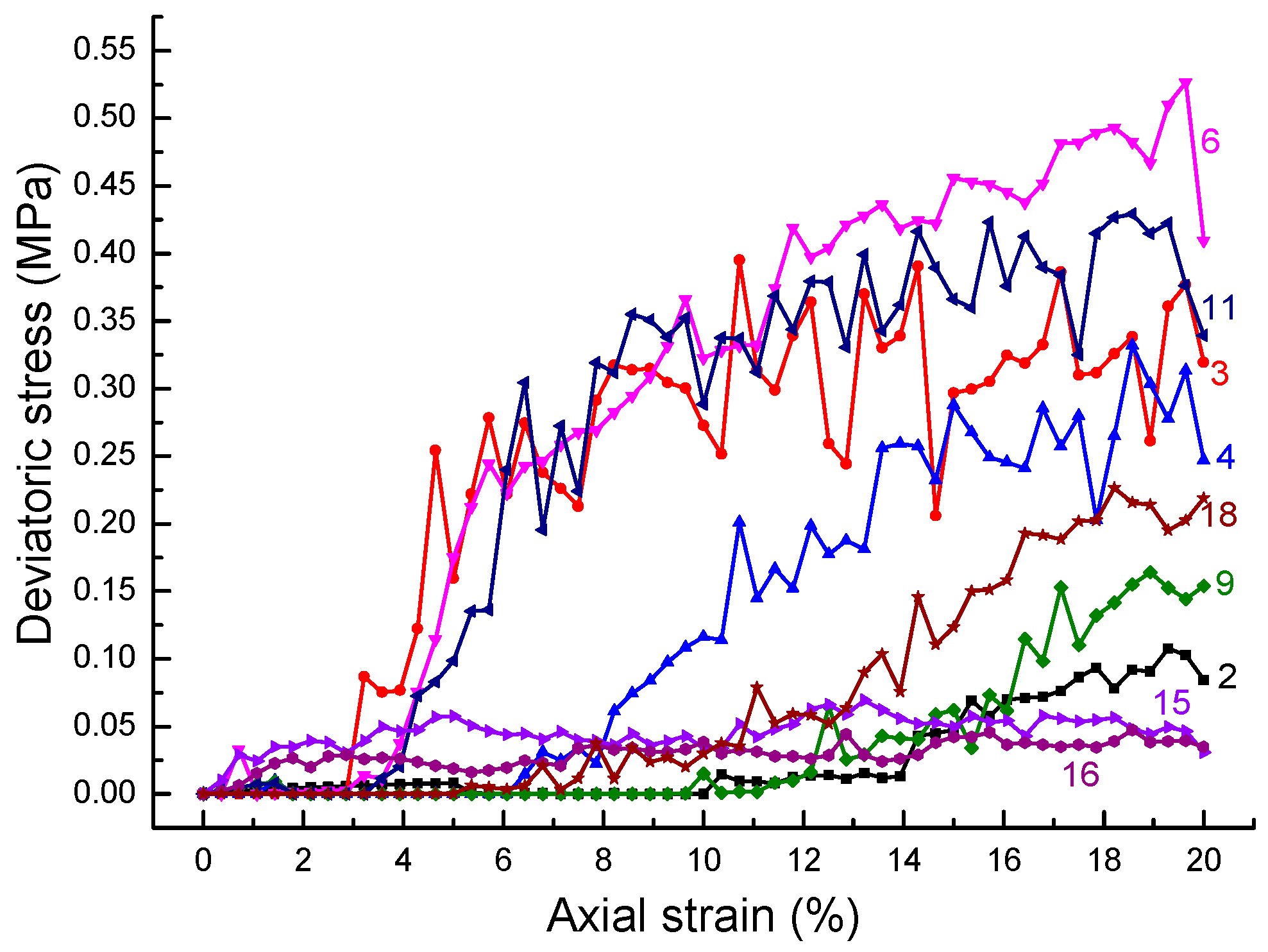

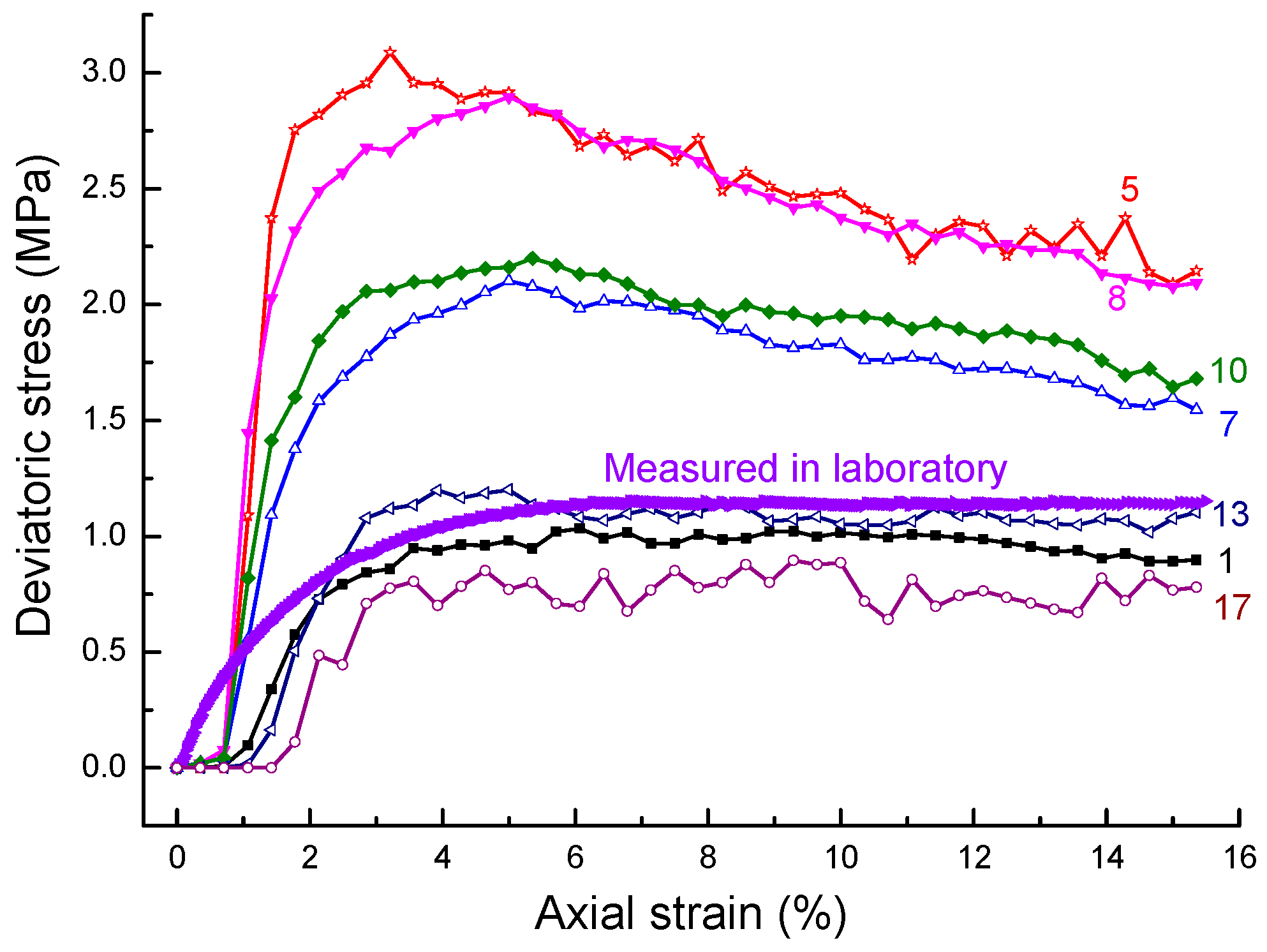
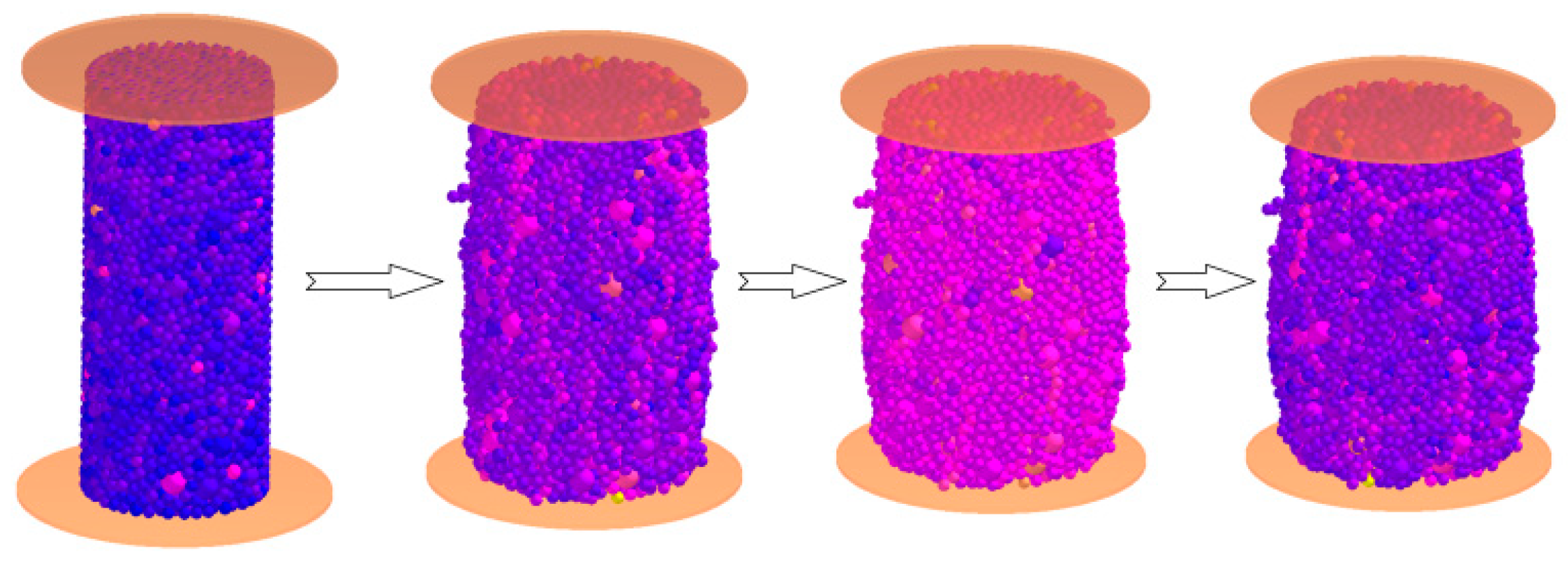
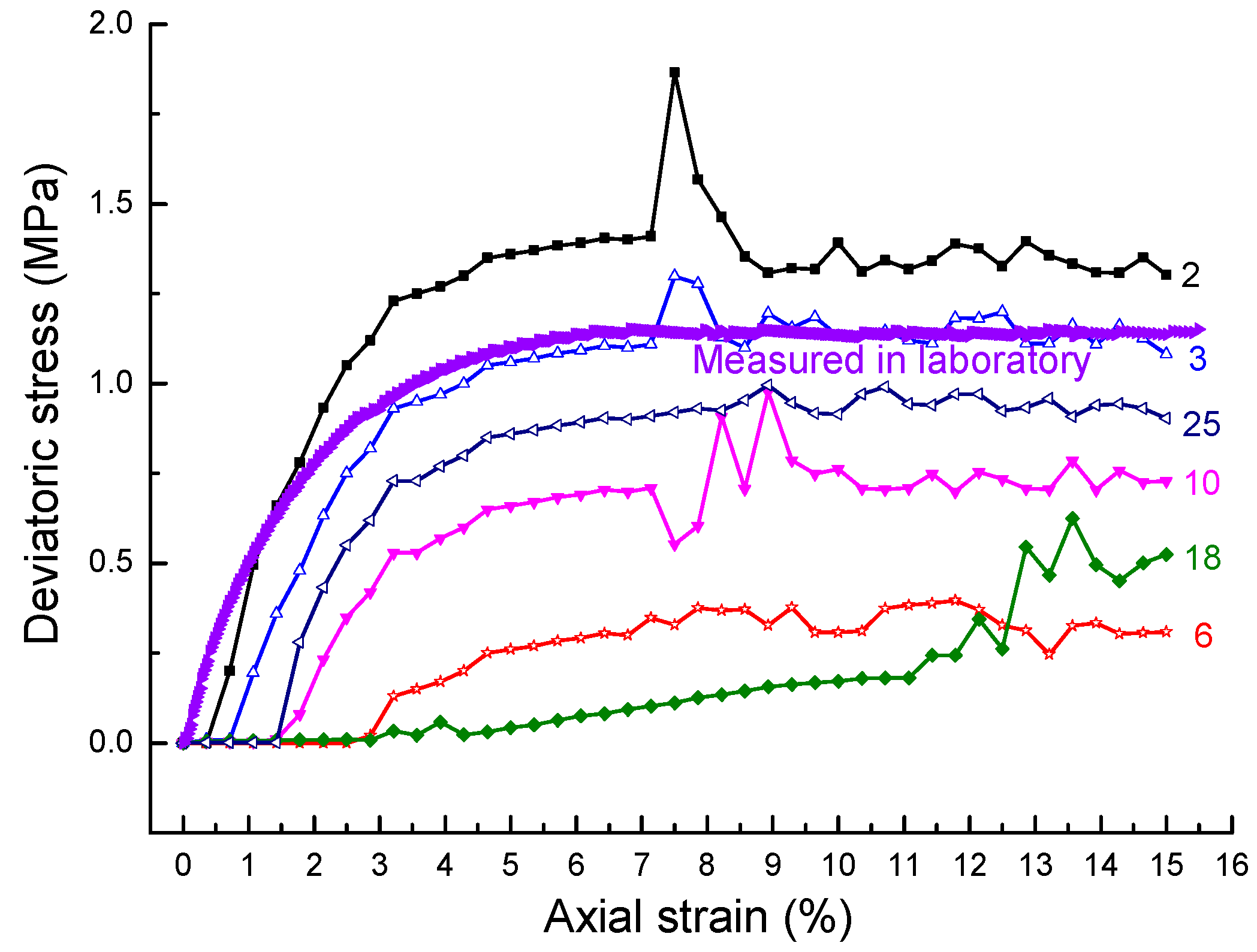
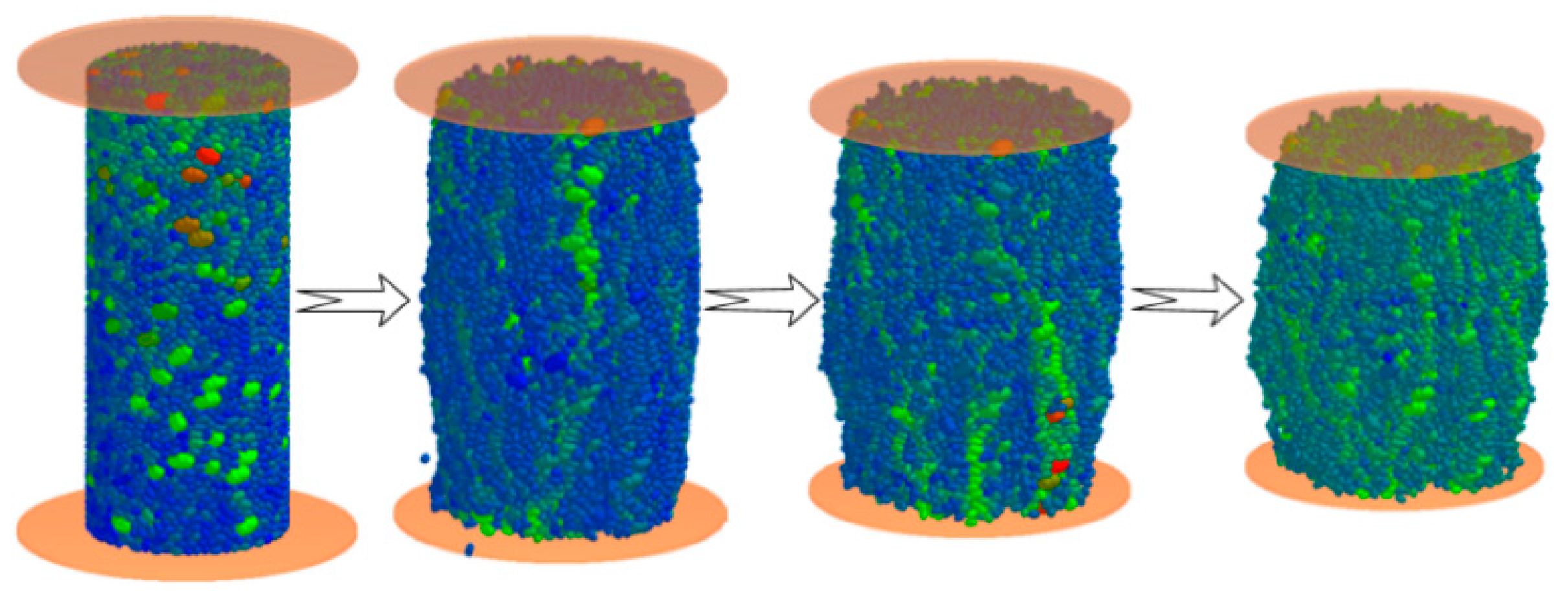
| Combination of Particle Size (mm) | Particle Number (×106) | Minimum Amplification Factor | Particle Number after Amplification |
|---|---|---|---|
| 40-25-20-16-10-5 | 2219 | 20 | 277,375 |
| 40-25-20-16-10 | 358.4 | 11 | 269,271 |
| 40-25-20-16 | 107.1 | 8 | 209,180 |
| 40-25-20 | 58.487 | 6 | 270,773 |
| 40-25 | 31.924 | 5 | 255,392 |
| Input S | Unit | Value | Comment |
|---|---|---|---|
| Material Parameter | |||
| Density ρ | kg/m3 | 2700 | Measured by overflow method |
| Poisson’s ratio ν | n/a | 0.15 | Hu et al. (2013) [35] |
| Yong’s modulus E | MPa | 5 × 104 | Hu et al. (2013) [35] |
| Shear modulus G | MPa | 2.17 × 104 | |
| H-M Contact parameter | |||
| Restitution coefficient e | n/a | To be calibrated | |
| Static friction coefficient μs | n/a | 0.6891 | |
| Rolling friction coefficient μr | n/a | To be calibrated | |
| Cohesion parameter (JKR model) | |||
| Surface energy k | J/m2 | To be calibrated | |
© 2019 by the authors. Licensee MDPI, Basel, Switzerland. This article is an open access article distributed under the terms and conditions of the Creative Commons Attribution (CC BY) license (http://creativecommons.org/licenses/by/4.0/).
Share and Cite
Cheng, P.; Zhuang, X.; Zhu, H.; Li, Y. The Construction of Equivalent Particle Element Models for Conditioned Sandy Pebble. Appl. Sci. 2019, 9, 1137. https://doi.org/10.3390/app9061137
Cheng P, Zhuang X, Zhu H, Li Y. The Construction of Equivalent Particle Element Models for Conditioned Sandy Pebble. Applied Sciences. 2019; 9(6):1137. https://doi.org/10.3390/app9061137
Chicago/Turabian StyleCheng, Panpan, Xiaoying Zhuang, Hehua Zhu, and Yuanhai Li. 2019. "The Construction of Equivalent Particle Element Models for Conditioned Sandy Pebble" Applied Sciences 9, no. 6: 1137. https://doi.org/10.3390/app9061137





